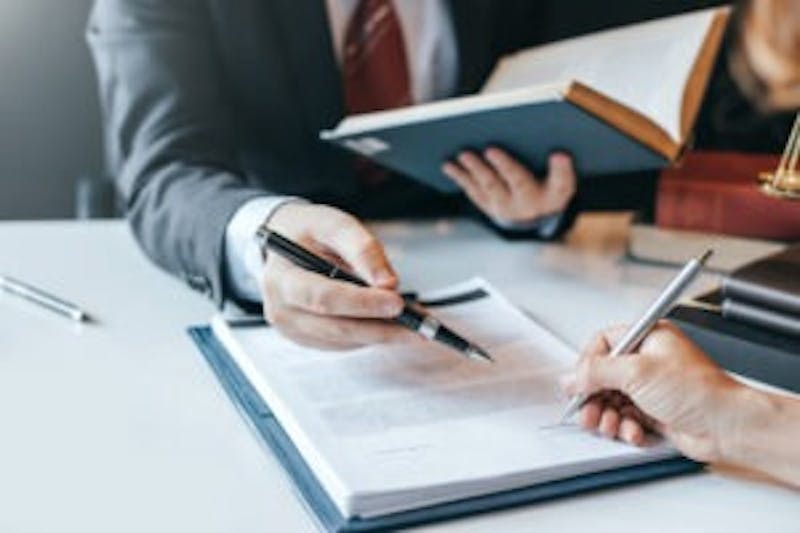
Determining fault in a car accident claim is a complex process that relies on a combination of factors, evidence, and legal principles. One of the primary considerations is adherence to traffic laws, as violations impact fault attribution. Assessing evidence, including photos, videos, and vehicle damage analysis, leads to a comprehensive understanding of the sequence of events.
At Heninger Garrison Davis, we have experience in building winning car accident claims. Since our law firm was founded, we have recovered over $3 billion for our clients. Our car accident lawyers in Birmingham will fight for maximum compensation on your behalf. Call us today to schedule a free initial consultation.
When Is Someone at Fault in a Car Crash Case?
Determining fault after a collision depends on the circumstances surrounding the incident. Typically, the individual responsible for causing the accident is deemed at fault.
The other driver can be found at fault for the crash if they violate traffic laws or engage in negligent actions:
- Running a red light
- Failing to yield
- Distracted driving
- Speeding
- Driving under the influence
- Texting while driving
Fault may not always be straightforward, and cases involving shared responsibility or contributory negligence may arise. A personal injury lawyer will help you better understand how local laws impact your case and will help you establish fault in your car accident case.
Schedule a Free Legal Consultation Contact Us
How to Prove Negligence in a Car Accident
Establishing negligence helps determine who is at fault for the accident. This is essential for allocating liability, influencing how insurance claims are processed and legal proceedings unfold.
To prove negligence, your car accident lawyer will focus on four key elements:
- Duty of Care: This refers to the legal obligation an individual has to act reasonably and prevent foreseeable harm to others. Every driver has a duty of care to operate their vehicle in a manner that does not pose an unreasonable risk to others on the road. This includes following traffic laws, obeying speed limits, and avoiding reckless behavior.
- Breach of Duty: It occurs when an individual fails to meet the standard of care expected in a given situation, thereby deviating from the duty owed to others. A breach of duty in a car accident might involve actions such as speeding, distracted driving, or disregarding traffic signals.
- Causation: You must establish a direct link between the defendant’s breach of duty and the resulting harm or damages suffered. You have to show that the negligent actions were a substantial factor in causing the accident and subsequent injuries. If the breach of duty did not directly contribute to the harm, causation may not be established.
- Damages: These refer to the actual harm or losses suffered as a result of the defendant’s breach of duty. Damages may include physical injuries, property damage, medical expenses, lost wages, and pain and suffering. It is essential to provide evidence of these tangible losses to support the claim for compensation.
These elements collectively form the foundation for proving negligence in car accident claims. An attorney from Heninger Garrison Davis will carefully investigate the crash scene to determine what led to the incident.
Types of Evidencethat Support the Responsible Party’s Fault
Building an evidence-based case is crucial to establishing fault in your car accident case. Your attorney will use a wide range of evidence to file a winning case. Please share any details you remember about the crash, as these could help your attorney strengthen your claim.
Our law firm stands up to assist car accident injury victims in reclaiming their lives. We offer compassionate legal support throughout the financial recovery process.
The Police Report
Prepared by law enforcement officers who respond to the scene, the police report provides an official and objective account of the incident. It typically includes details such as statements from involved parties, witnesses, and any observations made by the responding officers.
Furthermore, the report typically contains information about citations issued, if any, to the parties involved. These citations can highlight specific violations of traffic laws that contribute to establishing fault.
Photographic and Video Evidence From the Accident Scene
These visuals provide a detailed and unbiased account of the conditions, positions of vehicles, and any relevant environmental factors. Photographs can showcase skid marks, road signs, and property damage, offering a tangible record that aids in reconstructing the sequence of events.
Videos, whether from surveillance cameras, dash cams, or smartphones, provide a dynamic portrayal of the accident, offering insights into the speed, actions, and behaviors of the involved parties.
Medical Records
Medical records detail the extent and nature of injuries suffered by the victims, linking them directly to the collision. This information can be instrumental in establishing the causation element of negligence, demonstrating how the actions or negligence of the responsible party directly resulted in physical harm.
These records may also contain details about the treatment received, rehabilitation efforts, and the prognosis for recovery, all of which contribute to assessing the accident’s impact on your life.
Vehicle Damage Assessment
Experts, such as collision repair professionals or insurance adjusters, examine the extent and patterns of damage to the vehicles involved. This assessment can reveal crucial details about the dynamics of the collision, the force of impact, and the angles at which the vehicles collided. Such information helps reconstruct the sequence of events leading up to the accident.
Witness Testimony
Eyewitnesses who observed the events leading up to and during the collision provide firsthand accounts that can offer unique perspectives on the behaviors of the involved parties. Their statements may include details such as the speed of vehicles, traffic violations, or other relevant factors contributing to the crash.
Our Car Accident Lawyers Will Help Establish Fault
Heninger Garrison Davis is dedicated to assisting clients in establishing fault and securing fair compensation. Whether negotiating with insurance companies or advocating in court, our lawyers leverage their experience to demonstrate the responsible party’s fault clearly.
By collaborating with accident reconstruction experts and medical professionals, we ensure a comprehensive understanding of the incident. We will use all available resources to strengthen your claim. Contact us today to discuss your legal options.
